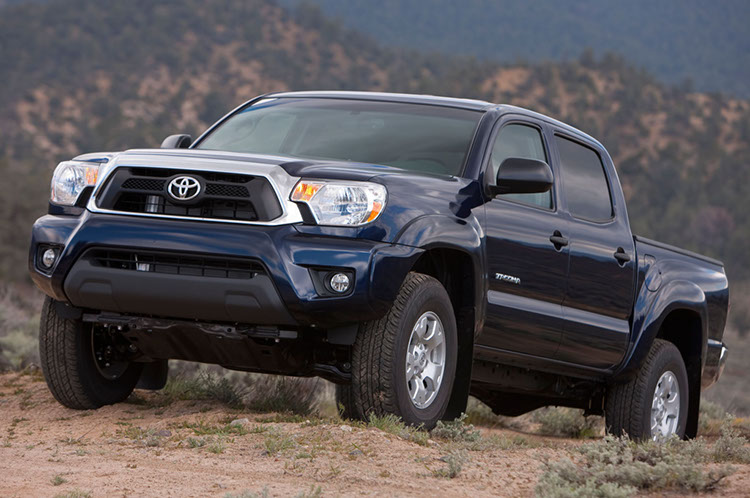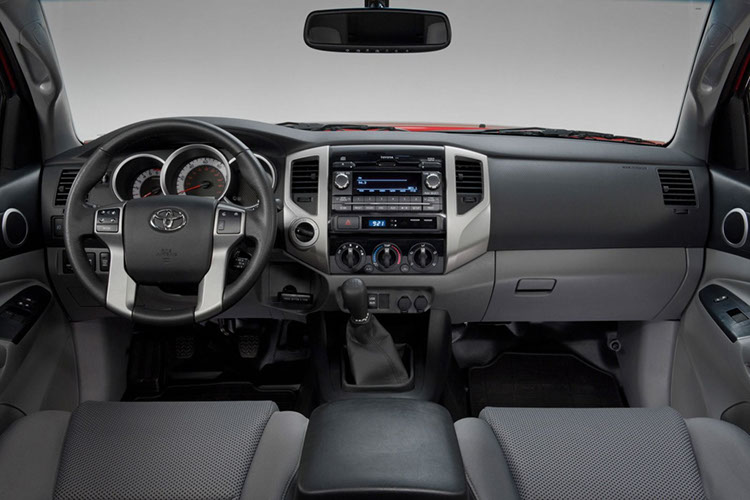
Seemingly every day, an automotive manufacturer trots out a press release debuting a new whiz-bang automotive technology. Maybe it's some sort of gas/electric hybrid system, or perhaps yet another camera or sensor designed to allow ever-more distracted drivers to avoid hitting things, but regardless the message delivered is this: New cars are thoroughly new. And most of the time that message is correct. Slide behind the wheel of any number of new automobiles, and you'll find more switches, knobs, drive modes and options than you can literally know what to do with. But sometimes that isn't what you want. Sometimes you just want four wheels and motor... because sometimes you need the sort of reliability than only simplicity can provide.

In fact, the first thing one notices when aboard a Tacoma is that not even its shape has changed to reflect the current trend towards taller and larger truck cabs; with a low roofline but a relatively large amount of ground clearance the Tacoma's cab proportions are almost car-like in their layout. The seats are mounted lower than most trucks', and the pedal box is further forward than it is downward, leading to a driving position that's a far cry from the high-seated, pedals-below-you feeling of something like an F-150. Of course, it's not uncomfortable, just different than one might expect and it does have some added bonuses if you happen to live in an area with underground parking. However, the flip side of that equation (literally) is that shorter folks will have some trouble pulling themselves into the Tacoma unless they fit some sort of side step. The sills are quite high.
Beyond the seating position, the other notable feature of the Tacoma's interior is its relatively Spartan, but practical layout. There aren't two dozen cupholders scattered about, nor is there a myriad of LCD screens and displays to inform you of everything from ambient temperature to engine speed. Instead, there's a bunch of readouts and controls that would look right at home in a 2004 model year vehicle. Regular needle gauges for the instrument cluster, regular dials for the climate controls, and regular buttons for the radio. On the upside, this means everything is very intuitive and easy to use, with real tactile feedback that cannot be matched by the touch-sensitive buttons many manufacturers are switching to. The only downside is that most of the optional infotainment systems available in the Tacoma aren't quite as well integrated with mobile devices as are the newest and most cutting-edge systems available in other vehicles. It also means the cabin looks a bit more cluttered, with a few more buttons spread around, but realistically that's a red herring as the alternative we've seen other manufacturers use is to nest controls within various on-screen infotainment menus. We'd rather just have a few extra buttons at our disposal as it's a lot easier to find a button without taking your eyes off the road than it is to navigate through two or three touch screen menus.

And then there's the reliability. We only had our test truck for a brief period, and of course, nothing was amiss with it as it had both a relatively low amount of mileage and a very diligent maintenance schedule lavished upon it. However, in talking to other Tacoma owners and looking at other long-term reviews, there's no doubt that the Taco is a mechanically reliable ride. The manager of the press fleet from which we withdrew this truck had particularly nice things to say about the maintenance schedule and frequency of repairs required by the Tacomas he's had come through his office over the span of many years; a real testament to the truck's reliability when one considers that press cars are often treated like the illegitimate offspring of a hated rental car.
But there were some areas in which the Tacoma's age began to show through in less positive ways. The first and foremost was in the fuel economy department. Although obviously under-stressed and very reliable, the 4.0L V6 is lethargic, thirsty, and has an old-school granular feel to it. Most newer engines benefit from more complete fuel and ignition tuning systems; specifically direct fuel injection. This allows the engine to be better tuned and give much better performance and fuel economy. In short, although it has a much more car-like ability to scythe through traffic and into parking stalls than a full-size truck, it'll be burning V8-powered full size truck fuel volumes while doing so. The other gripe we found was with the transmission. Unburdened, the four speed automatic is passable, but saddled with either a decent load in the bed or a trailer off the back and it becomes immediately apparent that a five speed would be beneficial as the four-speed hunts between gears quite frequently.
However, we suspect those gripes will be addressed next year, as the Tacoma undergoes a complete redesign for the 2016 model year. We already know direct injection and variable valve timing will be coming to the engine bay, as well a whole host of other upgrades designed to bring the Tacoma back in line with its contemporaries... we just hope that those updates don't culminate in a truck that's forgotten it's rugged roots, because while we certainly love modern features and technology, there's still something to be said to rugged dependability.